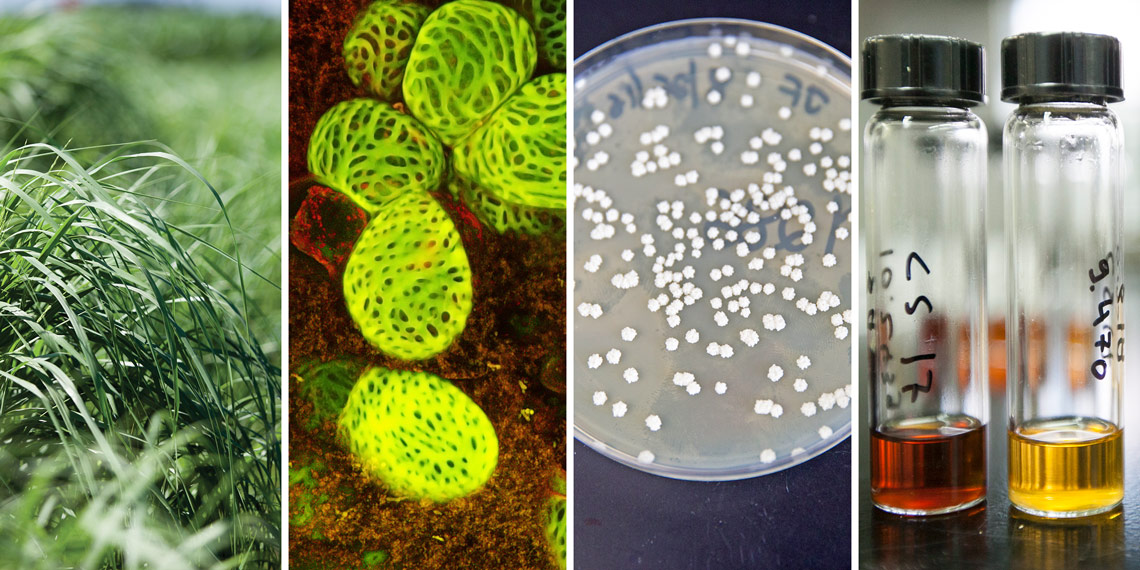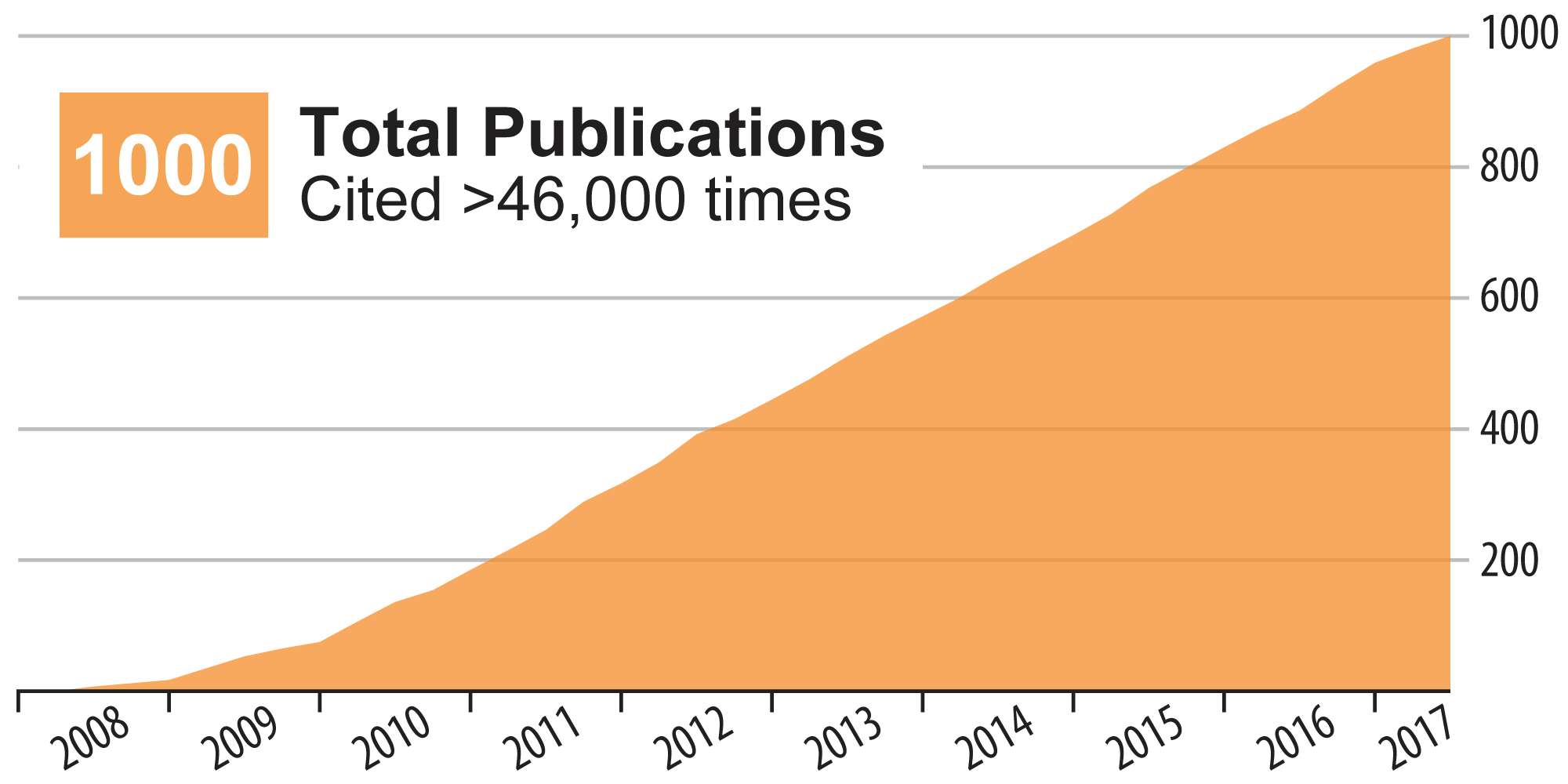
The Great Lakes Bioenergy Research Center (GLBRC), one of three bioenergy research centers established in 2007 by the Biological and Environmental Research program in the U.S. Department of Energy’s (DOE) Office of Science, recently published its 1,000th scientific paper. The milestone highlights GLBRC’s leading role in conducting the research needed to bring advanced biofuels to the marketplace.
Led by the University of Wisconsin–Madison and major partner Michigan State University (MSU), GLBRC is organized around a central mission: to develop a robust and sustainable pipeline for producing biofuels and chemicals from the non-edible, or lignocellulosic, portion of plants.
“Surpassing the 1,000 publications milestone is the result of GLBRC’s ongoing work with academic and industrial partners across four different research areas—sustainability, plants, deconstruction, and conversion,” says GLBRC Director Tim Donohue. “These collaborations form the technical foundation of the Center’s more than 150 patent applications and help move us toward an industry that can sustainably and profitably produce fuels and chemicals from biomass.”

Over the previous decade, GLBRC has generated, on average, more than two scientific publications per week. Published in more than 250 different academic journals and more than 50 books, this body of frequently-cited scholarly work details ground-breaking findings in important biofuels-related research areas.
“Transforming the results of scientific research into new commercial products is a complex process,” says Marsha Mailick, UW–Madison Vice Chancellor for Research and Graduate Education. “But when universities and companies work in tandem to push the frontiers of knowledge, they become a powerful engine for innovation and economic growth. GLBRC is an excellent example of university researchers and industry working closely together to generate new knowledge and maximize the social and economic benefits of these new ideas.”
GLBRC publications include research on lignin, the hard-to-process compound that gives plant cell walls their sturdiness. Perhaps most notable is GLBRC’s development of Zip-lignin technology, a way of modifying lignin that makes it easier to degrade for conversion to biofuel or bio-products.
"GLBRC is at the forefront of new concepts for lignin utilization," says Jerry Gargulak, Business Development Manager at LignoTech USA. "The work being done to design modified poplar lignin with decreased complexity is spectacular. This technology has the potential to open up a completely new route to lignin-based chemicals and change the bio-based chemical industry in a new and exciting way."

GLBRC publications demonstrate the Center’s productive relationships with industry, government agencies, and other research institutions: in the previous two years alone, GLBRC’s published work is the result of collaboration with scientists at 148 U.S. institutions in 42 states (left) and 127 international institutions in 28 countries (right).
Another significant publication reports on the plant-based solvent gamma-Valerolactone (GVL). Early-stage start-up company Glucan Biorenewables, LLC is using GVL to help convert biomass into high-value industrial chemicals, a unique process that could advance production of renewable and economically viable biofuels and chemicals.
"We at Glucan Biorenewables are grateful for the work being performed at GLBRC as it is building a strong technical foundation for the coming commercial deployment of the GVL biomass conversion platform,” says GlucanBio CEO Larry Clarke. “In time, GVL's capabilities will result in a breakout performance in biomass conversion with tremendous growth opportunities on a global scale."
Doug Gage, MSU’s Assistant Vice President for Research and Graduate Studies, also points to GLBRC’s collaborative structure as a driver of productivity.
“With more than 400 scientific minds at work, GLBRC is a shining example of the synergy created through collaboration,” says Gage. “The publication of 1,000 academic papers is an exciting milestone and this productivity level is exactly what’s needed moving forward to develop the future technologies required for sustainable and cost-effective production of energy-dense fuels and chemicals from plant biomass.”
GLBRC is one of three bioenergy research centers established in 2007 by the Biological and Environmental Research program in the U.S. Department of Energy’s (DOE) Office of Science to conduct transformational research and build the foundation of new cellulosic biofuels technology. For more information on GLBRC, visit www.glbrc.org or visit us on twitter @glbioenergy.